While many remember the charming rogue of an archaeologist from the original Raiders of the Lost Ark, Dr. Henry ‘Indiana’ Jones’ second cinematic adventure, Temple of Doom, revealed a much darker side to the character. Set in 1935, the film opens with Indiana escaping from a deal gone wrong in Shanghai. After crashing a plane in the Himalayas and surviving a harrowing raft trip down raging rapids, he finds himself in a remote Indian village where the sacred Sankara stone has been stolen. Enlisting the help of a nightclub singer and a precocious child sidekick, Indiana is determined to recover the stone from the sinister Thuggee cult in their palace of death. What follows is a disturbing descent into a hellish underworld of ritual sacrifice, black magic, mind control, and even human heart extraction. While Raiders cemented Harrison Ford as a leading man and the fedora and whip as iconic, Temple of Doom serves as a sobering reminder of the potential perils of unchecked colonial-era archaeology and the sinister practices of a long-vanished secret society. This chapter of Dr. Jones’ adventures may be his darkest, but for better or worse, it’s one fans will never forget.
The Prequel That Went Dark
The second installment of the Indiana Jones franchise took a dark turn, leaving behind the serial adventure thrills of Raiders of the Lost Ark. Released in 1984, Indiana Jones and the Temple of Doom is a prequel set in 1935 that finds Indy in Shanghai, where he recovers a stolen artifact. He then crashes in India and stumbles upon a remote village practicing human sacrifice and enslaved children.
The tone of Temple of Doom is markedly bleaker and more sinister than Raiders. Director Steven Spielberg wanted to replicate the chilling tone of the early James Bond film Dr. No. As such, the fantastical and religious artifacts of the first film are replaced with a focus on cult mysticism and ritual. The primary villains are the Thuggee, a real-life cult that worshipped the Hindu goddess Kali through ritual murder and violence.
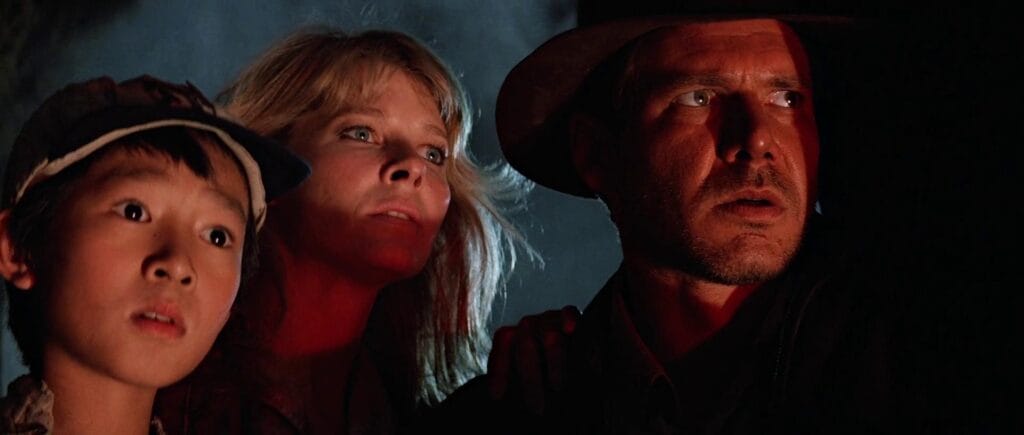
At the time of release, the film received some criticism for its dark content and mature themes compared to the first film. The MPAA created the PG-13 rating specifically in response to Temple of Doom. However, the film was still a massive blockbuster hit, proving the franchise could explore a range of tones.
For fans of the series, Temple of Doom remains the most polarizing film. While some appreciate its unflinching darkness and complex depiction of Indian culture, others find it too bleak and intense compared to the rest of the franchise. However, there is no denying its place in cementing Indiana Jones as a versatile and bold adventure hero, one willing to go to frightening places in his endless quest for rare artifacts. Overall, Temple of Doom gave the world a glimpse into the darkest corners of Dr. Jones’ globetrotting adventures.
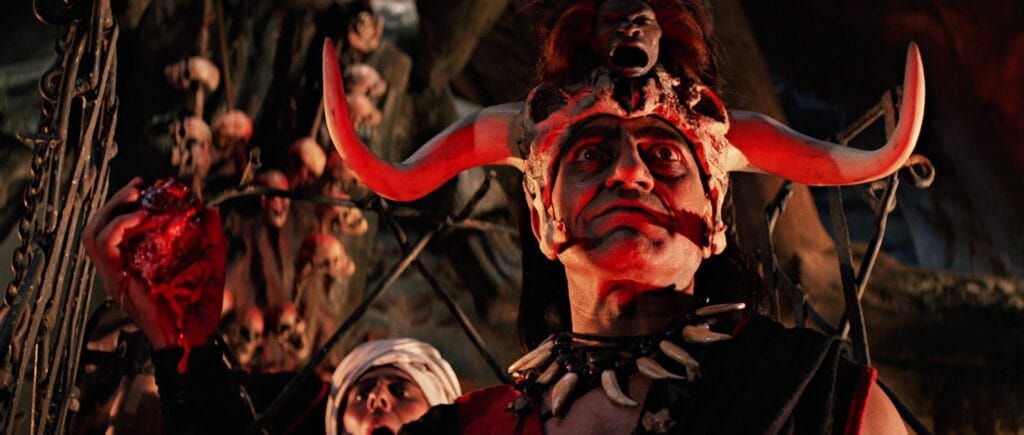
Dr. Jones at His Lowest Point
In Indiana Jones and the Temple of Doom, Dr. Jones is at his lowest point, both physically and emotionally. Having escaped a raging bar fight in Shanghai and a harrowing plane crash in the Himalayas, Dr. Jones finds himself in a remote Indian village where the sacred Sankara stone has been stolen.
The theft of the ancient stone artifact has brought misfortune to the village. Crops are dying, children are disappearing, and an evil seems to have settled over the land. Dr. Jones agrees to retrieve the stone to restore prosperity to the village.
He embarks on a treacherous journey to Pankot Palace, a lavish estate in the mountains ruled by the sinister Thuggee cult. There, Dr. Jones discovers a hidden temple of doom, filled with booby traps, secret passages, and unimaginable dangers. The cult is engaged in sinister rituals of human sacrifice to their sinister deity, Kali.
Dr. Jones is captured, enslaved and forced to drink a potion that robs him of his will. Under the influence of the dark magic potion, even the courageous Dr. Jones begins to doubt himself and his abilities. Fortunately, with the help of his quick-witted sidekick Short Round and a nightclub singer named Willie Scott, Dr. Jones is able to overcome the potion’s effects. After a climactic mine cart chase and rope bridge fight, Dr. Jones defeats the Thuggee leader Mola Ram and escapes from the temple, restoring the missing Sankara stone to the village.
Battered and bruised, Dr. Jones emerges from his darkest chapter, his indomitable spirit and moral compass intact. Though tested to his limits, Dr. Jones proves he can endure and overcome even the most perilous of circumstances.
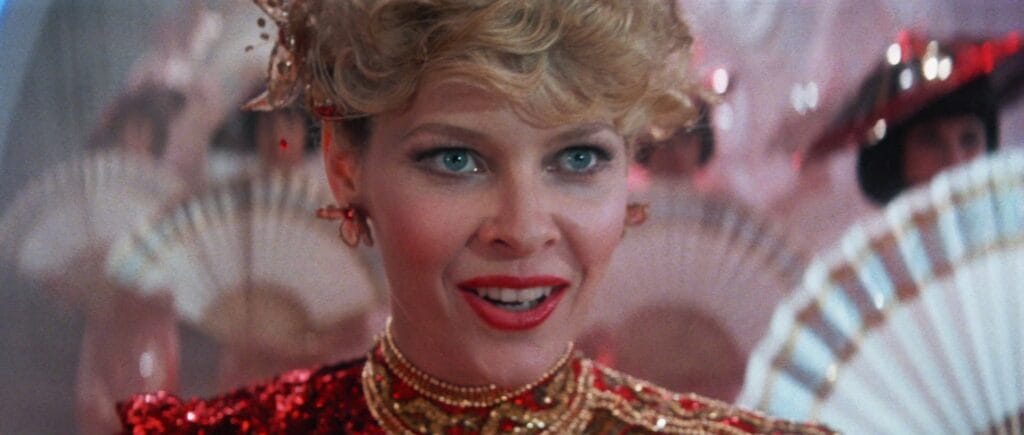
A Complicated Hero’s Journey
A Hero’s Journey Into Darkness
In Temple of Doom, Indiana Jones descends into a journey of darkness that tests his morality and heroism. Unlike the lighthearted adventure of Raiders of the Lost Ark, the second film in the franchise explores the complexity of Jones’ character through a descent into a “heart of darkness”.
The Allure of Fortune and Glory
At the start of the film, Jones is portrayed as a flawed hero motivated by personal gain and glory. He agrees to retrieve a sacred stone for a Chinese village in exchange for a diamond. His love interest, Willie Scott, is similarly vain and materialistic. However, their experiences in the Temple of Doom force them to confront the darkness that exists within themselves and ultimately transcend their selfish desires.
Confronting Evil
In the secret underground temple, Jones and his companions witness the evil Thuggee cult, who practice human sacrifice and black magic. The high priest Mola Ram uses the sacred Sankara Stones to control the children of the village. Encountering such profound evil pushes Jones and Willie to acts of heroism as they work to stop the cult’s sinister practices, defeat Mola Ram, and free the enslaved children.
The Triumph of Good
Though Indy starts from a place of moral ambiguity, the film follows the classic hero’s journey arc. After confronting darkness in its purest form, Jones is able to overcome his flaws and act with courage and virtue. He chooses to save the village rather than claim the diamond, and destroys the stones to break Mola Ram’s control, defeating evil and restoring light. In the end, the hero and heroine are fundamentally changed, able to find meaning in acts of sacrifice and service rather than fortune and glory.
The complex character development of Indiana Jones in Temple of Doom creates a thought-provoking depiction of good vs. evil. Though dark and intense, the film suggests that even flawed and selfish individuals can rise to heroism when confronted by the forces of darkness.
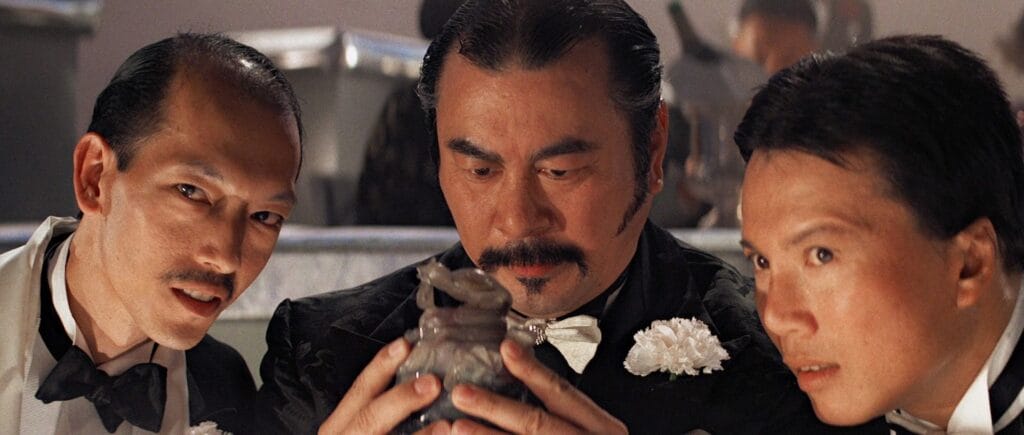
From India to China: Globe-Trotting Adventure
Dr. Jones’ quest for the Sankara Stones took him on a thrilling adventure across India and into China.
After escaping from the Temple of Doom in India with the Sankara Stones in hand, Dr. Jones traveled north to the city of Shanghai. Shanghai in 1935 was a bustling port city, with European colonial influences mixing with traditional Chinese culture. As a center of trade, Shanghai attracted merchants, traders, and opportunists from around the world.
Upon arriving in Shanghai, Dr. Jones connected with Wu Han, an old friend and accomplished acrobat. Wu Han introduced Dr. Jones to the Shanghai nightlife, taking him to lavish nightclubs and casinos. However, their revelry was short-lived. Agents of the nefarious Lao Che crime syndicate kidnapped Wu Han in an attempt to seize the Sankara Stones.
Lao Che’s henchmen brought Dr. Jones and his companions to a glittering Shanghai nightclub used as a front for Lao Che’s criminal operations. In a tense standoff, Lao Che demanded Dr. Jones hand over the Sankara Stones in exchange for Wu Han’s life. Refusing to be intimidated, Dr. Jones challenged Lao Che to a daring wager – if Dr. Jones retrieved an autographed napkin from the nightclub’s star performer without being caught, Wu Han would go free. Against all odds, Dr. Jones accomplished the feat, securing Wu Han’s release.
Barely escaping Shanghai with their lives, Dr. Jones and his friends boarded a cargo plane headed for India. Though Lao Che’s forces shot at the plane, Dr. Jones piloted the aircraft to safety and made their getaway. After the harrowing events in Shanghai, Dr. Jones likely looked forward to returning the Sankara Stones to their rightful place in the Temple of Doom and leaving the criminal underworld of Shanghai far behind. Overall, Dr. Jones’ brief trip to China served as a reminder of the dangers that came with his chosen line of work as an archaeologist and adventurer.
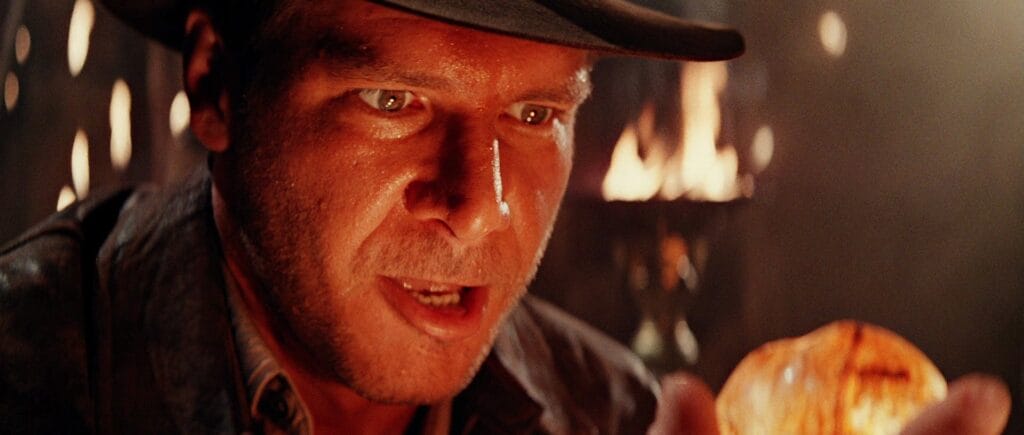
Dark Magic and Human Sacrifice in Pankot Palace
The dark magic and human sacrifice that took place within the walls of Pankot Palace represented the darkest and most sinister chapter of Dr. Jones’ adventures.
The Thuggee Cult
The palace was home to the Thuggee cult, who worshipped the Hindu goddess Kali and practiced ritual murder and plunder. The cult believed that Kali could only be appeased by human sacrifice. The high priest Mola Ram led gruesome rituals where victims were slowly killed through rituals like voodoo dolls, hypnotism, and being burned alive.
Enslaved Children
The cult preyed on the weak and vulnerable, enslaving orphaned children and forcing them into hard labor. The palace dungeons were filled with enslaved children, many of whom were starving or suffering from disease and injury. The cult cared little for human life and saw the children as disposable.
The Inferno
In a secret underground temple, the cult conducted a ritual called “the inferno,” where victims were lowered into a lava pit as a sacrifice to Kali. The inferno was used to terrify the enslaved children into submission and force them to renounce their faiths in favor of worshipping Kali. The lava pit represented the cult’s cruel and fiery brand of evil.
Defeating the Cult
Dr. Jones teamed up with the courageous Short Round and nightclub singer Willie Scott to infiltrate the palace, defeat the Thuggee cult, and free the enslaved children. After many close calls, dangerous adventures dodging assassins and evil magic, and a high-speed mine cart chase, Jones outwitted Mola Ram and left him to perish in the lava pit he had used to kill so many innocent victims. Pankot Palace was engulfed in flames, ensuring the end of the sinister Thuggee cult and its reign of terror.
Through this harrowing adventure, Dr. Jones showed his heroic spirit in the face of immense darkness and danger. Though grim and frightening, the defeat of Mola Ram and the Thuggee cult represented good triumphing over evil.
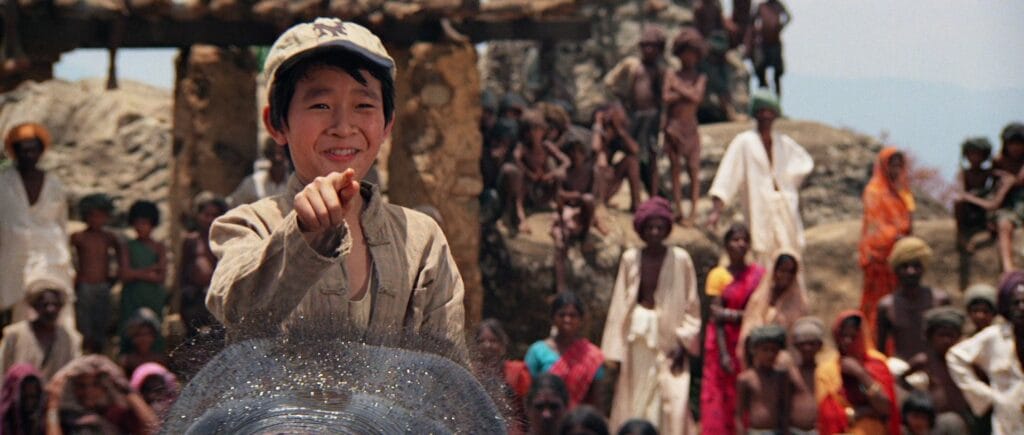
Escaping the Temple of Doom
Navigating the Temple
After awakening from their drug-induced slumber, Dr. Jones, Willie, and Short Round found themselves trapped within the confines of the mysterious Temple of Doom. The trio explored the ancient structure in hopes of finding an exit, wandering through a series of underground tunnels and chambers.
Evading Thuggee Guards
Their explorations were fraught with danger, as the Temple was heavily guarded by the Thuggee, a sinister cult that worshipped the goddess Kali. Dr. Jones and his companions were forced to hide and sneak past the guards on multiple occasions to avoid capture. Any encounters usually resulted in a swift escape on Dr. Jones’ part, demonstrating his aptitude for evading adversaries in tense situations.
Crossing the Lava Pit
One of the most perilous obstacles within the Temple was a massive underground lava pit, filled with molten rock. To cross this treacherous terrain, Dr. Jones devised an ingenious solution. He wrapped a rope around a sturdy pillar on one side of the chasm and tossed the rope across, creating a makeshift bridge. Willie and Short Round then carefully shimmied across the rope to the other side. However, midway through Dr. Jones’ own crossing, the rope caught fire, forcing him to swing dramatically to the other side just as the rope collapsed into the lava below.
Final Escape
After confronting the high priest Mola Ram and recovering the stolen Sankara Stones, Dr. Jones, Willie, and Short Round finally located a mine cart to make their escape. They raced through the tunnels at breakneck speed, dodging Thuggee attacks and jumping over gaps in the tracks. At the last moment, Short Round saved them from a dead end by activating a switch to change the direction of the tracks. The cart emerged from the exit of the Temple, hurtling over a cliff and landing in a river below where they were rescued by British soldiers and returned home, safe at last from the Temple of Doom.
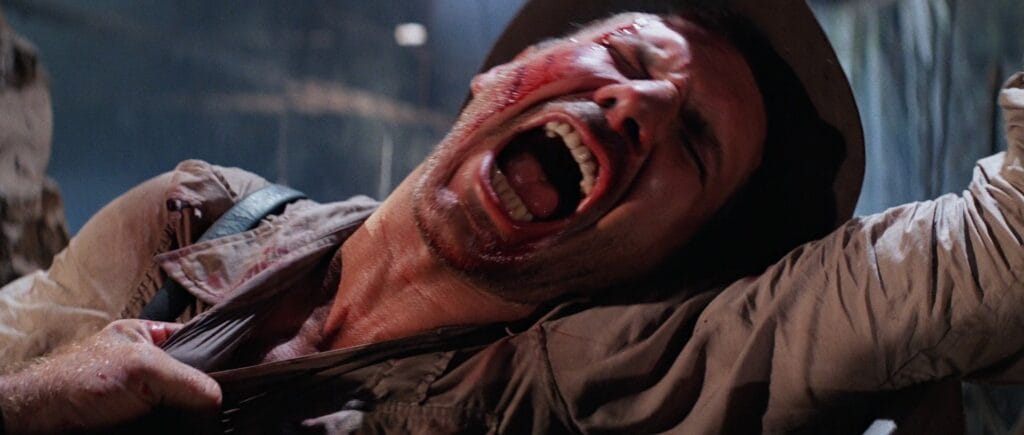
Short Round: The Sidekick Who Stole Our Hearts
The Orphaned Sidekick
Short Round, played by Ke Huy Quan, is Dr. Jones’ orphaned sidekick in Temple of Doom. While piloting Jones and love interest Willie Scott out of Shanghai, Short Round proves instrumental in helping them escape capture. His quick-thinking and driving skills allow them to narrowly avoid apprehension.
Comedic Relief
Short Round provides comedic relief throughout the film with his witty comebacks and jokes. Though a child, he is very street-smart and worldly. His humor and charm make him instantly likable, as evidenced by his and Willie’s playful banter. Quan’s performance showcases impeccable comedic timing for an actor of any age.
Loyal Companion
Despite the horrors they face together in Pankot Palace, Short Round remains loyal to Indy. He looks up to Jones as a father figure and is eager to help in any way he can. Short Round’s innocent and lighthearted nature contrasts well with the sinister practices of Mola Ram and his Thuggee cult. His presence reminds the audience of the goodness that still exists in the world and provides a glimmer of hope, even in the darkest of places.
Fan Favorite
Though appearing in only one Indiana Jones film, Short Round is regarded as one of the franchise’s most beloved characters. His charm, humor, and heart of gold won over audiences and cemented him as a fan favorite. Decades later, fans still clamor for his return, hoping he and Indy will reunite for one last globe-trotting adventure. Short Round’s lasting popularity and impact demonstrate how a well-written, multidimensional sidekick can steal the show.
In the end, Short Round emerges as the surprise star of Temple of Doom. Though a secondary character, his humor, wit, and heart make him the perfect foil for the brooding Dr. Jones. Short Round proves that while sidekicks are often overlooked, they frequently become the most memorable part of the story. His role in the film highlights how a sidekick, when crafted with care, can resonate just as much as the main hero.

Chilled Monkey Brains and Other Dangers of Pankot Palace
The lavish palace of the Thuggee cult in Pankot Province hid many dangers for intruders. The cultists’ sinister rituals and practices posed lethal threats at every turn.
Chilled Monkey Brains
One of the most unsettling dishes served at the palace was chilled monkey brains. The cultists would remove the top of a live monkey’s skull to expose its brain. They would then spoon out and eat the brain matter while the monkey was still alive, believing it gave them strength and courage. This gruesome practice showed the cult’s cruel and inhumane nature.
Descending Spike Ceiling Trap
To protect their underground temple, the Thuggee installed deadly traps to deter trespassers. One such trap was a descending ceiling lined with metal spikes. If triggered, the ceiling would suddenly drop down, impaling anyone underneath on the spikes. Dr. Jones narrowly avoided becoming a victim of this trap, showcasing his knack for death-defying escapes.
Mola Ram’s Blood Ritual
The high priest Mola Ram performed sinister blood rituals to the goddess Kali. He would rip out a person’s still-beating heart as a sacrifice, lowering the victim into a lava pit. The erupting lava and smoke were thought to appease and summon Kali. Mola Ram’s fanaticism and cruelty made him a formidable foe, willing to sacrifice anything and anyone to achieve his dark purposes.
The lavish palace of the Thuggee cult in Pankot Province hid many dangers for intruders. The cultists’ sinister rituals and practices posed lethal threats at every turn. Between the gruesome cuisine, deadly traps around every corner, and bloodthirsty sacrifices, the palace was fraught with peril for anyone foolish enough to venture inside. Dr. Jones showed immense courage by infiltrating this den of danger to put an end to the Thuggee’s murderous ways.
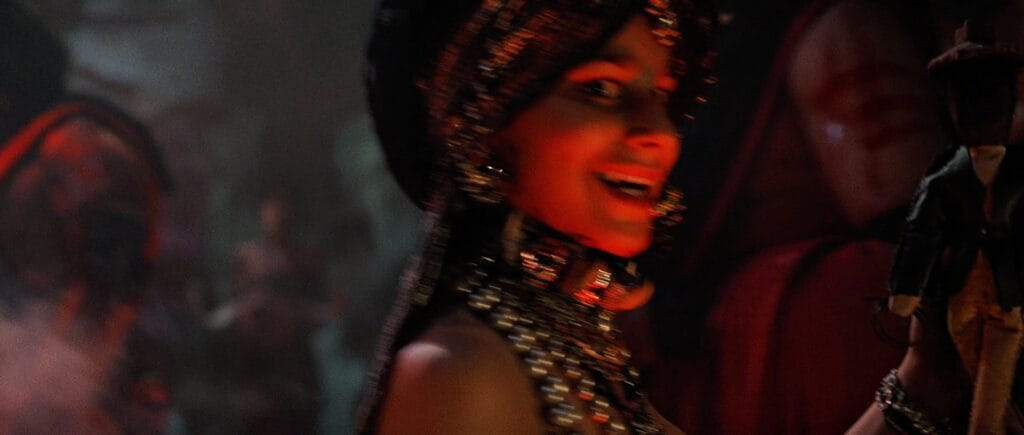
FAQs About the Temple of Doom
Is the Temple of Doom based on a real ancient Indian temple?
The Temple of Doom in Indiana Jones and the Temple of Doom was not based on any one real temple. However, it was inspired by elements from several historic sites in India. The film’s director, Steven Spielberg, wanted to create a “darker” sequel to Raiders of the Lost Ark. He was influenced by Indian religious sites like the Hindu temples of Khajuraho, with their erotic carvings, as well as the Thuggee cult, which allegedly practiced human sacrifice. The temple’s sinister traps and the villain Mola Ram were created for cinematic effect.
What year does Temple of Doom take place?
Indiana Jones and the Temple of Doom is set in 1935, one year before the events of Raiders of the Lost Ark. This places it in the pre-World War II era, prior to the start of WWII in 1939. The time period is evidenced through the costumes, automobiles, and technology featured in the film.
What artifacts does Indy recover in Temple of Doom?
In Temple of Doom, Indy does not actually recover any artifacts for his museum. Instead, the story focuses on him rescuing enslaved children and stopping the Thuggee cult. However, there are three sacred stones that play an important role in the plot:
- The Sankara Stone – Encrusted with sacred gems and believed to contain the power of the god Shiva. The Thuggee cult uses the stones in evil rituals.
- The Shiva Lingam Stone – Kept in the inner sanctum of the temple, this stone allegedly contains the life force of Shiva. Its removal causes the temple to collapse.
- The Shankara Stone – Not shown on screen, but mentioned as one of five sacred stones, of which three have already been stolen.
What happened to Short Round after the events of Temple of Doom?
The character of Short Round, played by Ke Huy Quan, only appears in Temple of Doom. His fate after the film is unknown and not addressed in any sequels or related media. As a minor character created specifically for Temple of Doom, Short Round likely returned home to China or continued traveling with Indy off-screen. His cheerful and courageous personality made him a memorable part of the film, though his long term story remains a mystery.
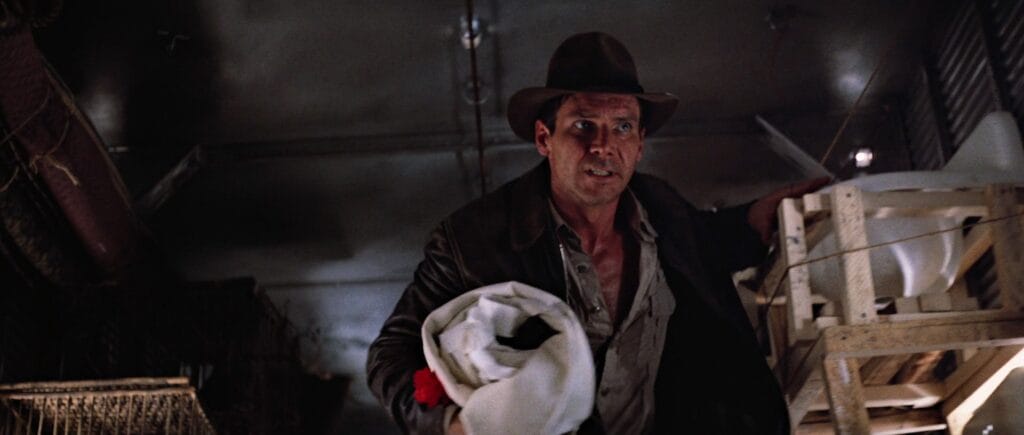
The Temple of Doom represented a dark chapter for Dr. Jones. While he was able to rescue the enslaved children and return the sacred Sankara stone, the horrors he witnessed in Pankot Palace and the mines of Kali haunted him for years to come. The journey tested his physical and mental endurance against a cult that embraced human sacrifice and slavery. Though Dr. Jones prevailed against these sinister forces, his narrow escape from the lava pit served as a sobering reminder of his own mortality. The Temple of Doom highlights the grave dangers of greed, corruption and blind faith. For Dr. Jones, it reinforced the importance of perseverance, courage under fire, and the eternal struggle of light against darkness.
Director

The Cast
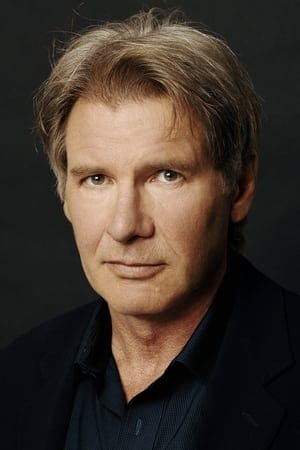


Amrish Puri
Roshan Seth
Philip Stone
